Days of rain and cooler temperatures are allowing me to catch up with the virtual gardens. In real time we are beginning the last week of May . . . the month seems to have bolted by with little rain and cool temperatures that held a multitude of blossoms longer.
Stepping back into earlier spring again and walking away from the south gardens and the Apple Gateway out towards the north field, beneath the serpentine Black Cherry 'Michael's Tree' (holding the meticulously woven
Baltimore Oriole nest) and White Birch, we approach the north garden's edge and our sixth older Apple wearing a white canopy of soft blooms.
The Apple stands, holding up blossoming arm-like limbs, beside quince along the fringe of the Crabapple Orchard. Seeing the giant Rock Maples from the north gives a different perspective of these majestic trees. Deciduous Dawn Redwood's graceful branches reach into the photograph (on left) from the north field trying to touch the Apple that seems to be stretching towards it too. In truth the
Metasequoia is much farther away and the Apple needs more serious pruning. I am standing in the north field looking over to the gardens and house.
Now, looking further to the right, I stand near a younger Rock Maple and have my camera pointed more into the
orchard that fills the space on the north side of the barn.
One path leads up into the garden offering a view of the fleecy textures of quince, apple, pine and crabapple just beginning to unfurl their sepals and petals. The rosy petals in the taller crabapple will turn pure white as seen below. The sweetness of the fragrance is heavenly.
Layers of quince, apple and crabapple flowers fully unfurl. All are members of the Rose (Rosaceae) family that dates back millions of years. Apples and Crabapples are of the genus Malus.
Various crabapple varieties blooming at different times. I wish I had better records and could name the varieties I planted nearly twenty years ago.
Looking through the Crabapple Orchard from the barn studio, the colors fill the windows and doors.
A Tufted Titmouse bathed in light and blooms sings for his mate. Who could resist?
Walking up towards the old farmhouse and looking back,viburnums and lilacs add another texture to the landscape.
Now, moving away from the Crabapple Orchard into other parts of the north garden and looking back.
The edge of the Crabapple Orchard and the north garden ablaze of blooms, seen while walking up yet another path from the north field . . . this one leading into the middle gardens, which I will share later this week.
Crabapple flowers are favored by foraging birds . . . especially the female Baltimore Oriole, who is taking a break from weaving her beautiful nest.
Woe be it for any little caterpillar, but the apples appreciate this steward. Crabapples are valued for their beauty and also they are an important food source during the spring and winter months for birds and butterflies. The small fruit is particularly preferred by Cedar and Bohemian Waxwings, Robins, Pine Grosbeaks, Wild Turkeys and some small mammals.
Just behind the farmhouse and the little studio looking down towards the Crabapple Orchard. The Weeping Crabapple (in the foreground) behind the studio is all budded out and will soon turn pure white. In real time they are fading and falling with the rain.
Looking out the barn studio door towards the north field and White Birch. The bright light on the white bark reflects the whiteness of some of the crabapple blooms. The late blooming lilac just before the quince is now fully blossomed with droopy blooms from the weight of rain and more rain.
The dozen crabapples that make up our Crabapple Orchard create a wildlife habitat in and of itself. Countless birds are often seen within the blooming branches gleaning for insects. Robins, warblers and even hummingbirds build their nests in the crabapple canopies and during the winter, Cedar Waxwings have a special technique of
tossing and catching the tiny round fruit, which helps sustain them throughout the winter months. The branches also hold the weight of
Wild Turkeys, especially when the ground is covered with snow, and help them survive the long winters here. All of this action, as well as, the fragrance and beauty of the crabapples offer us mere humans great joy.
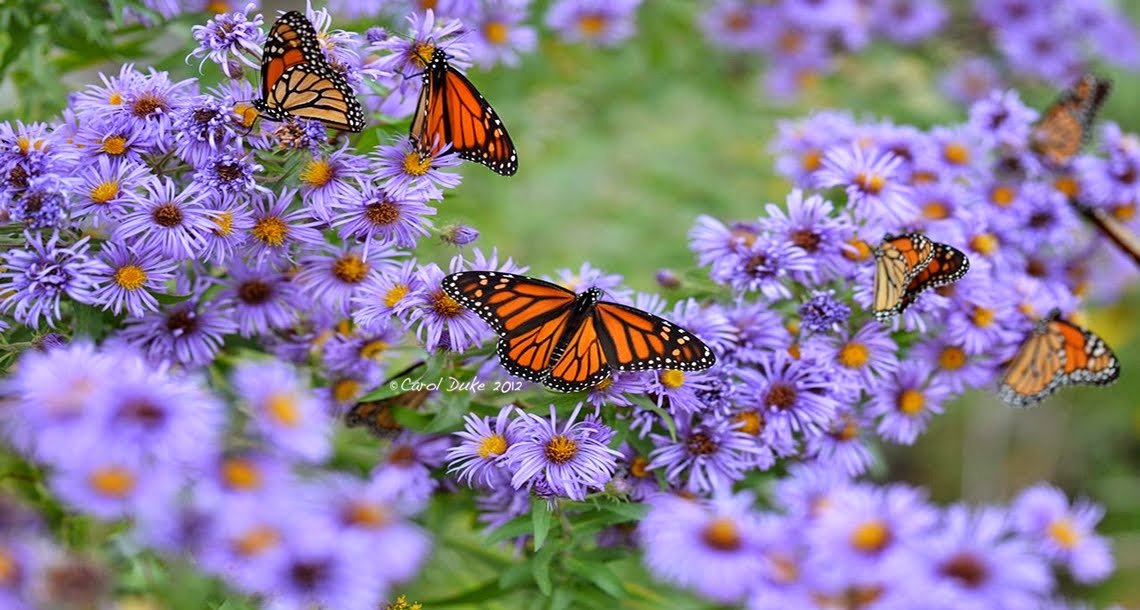


















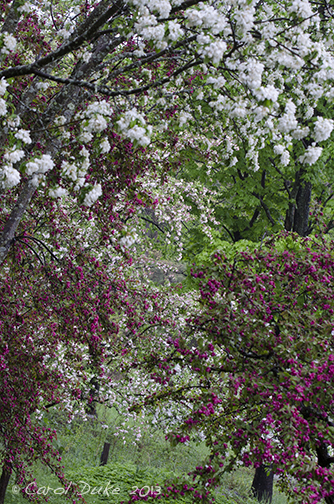

































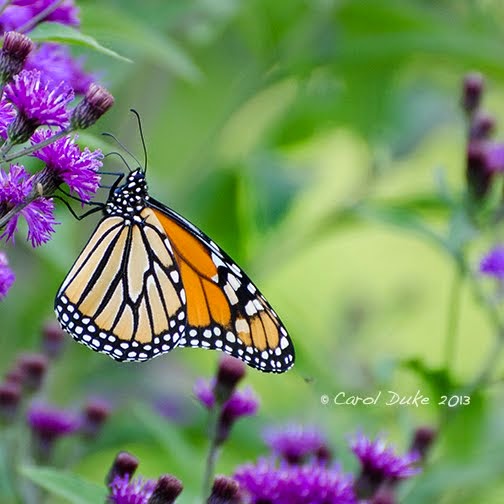

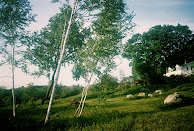

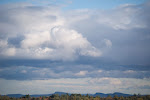



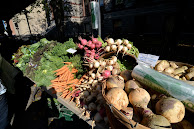

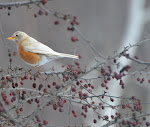






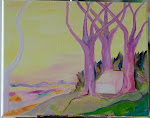






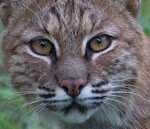




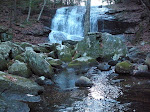
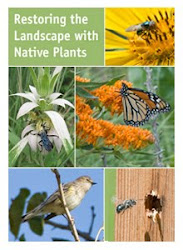








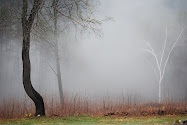












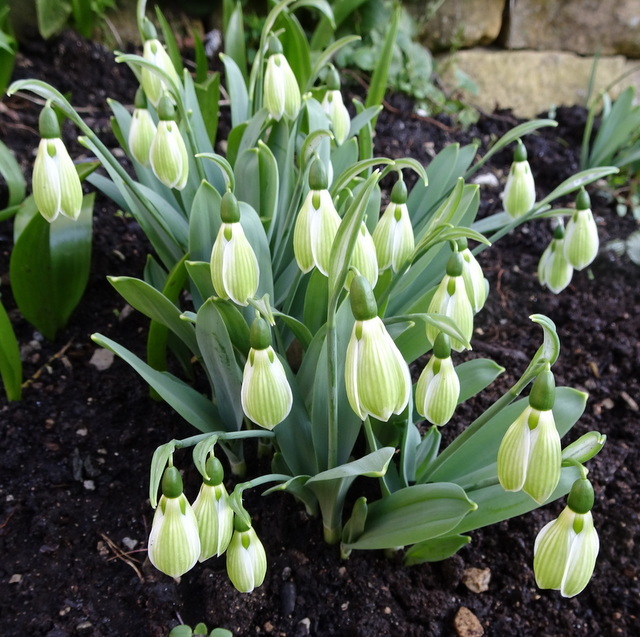




































.png)





















